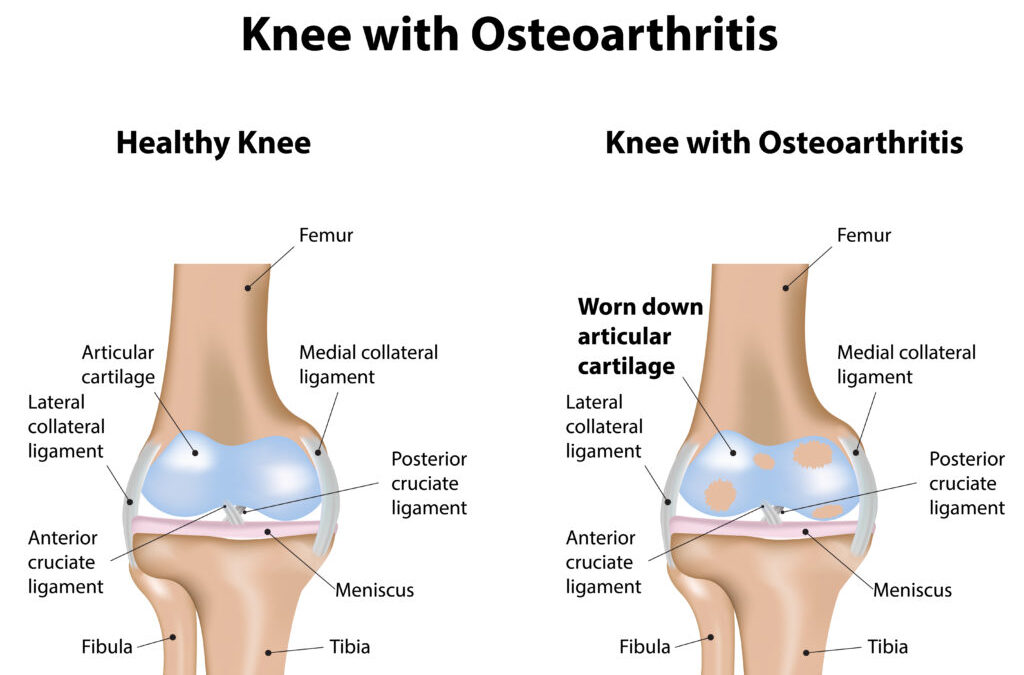Knee pain connected to an autoimmune disease is uncomfortable and can seriously restrict your daily activities. Your knee is the largest joint in your body and bears most of your standing body weight.
The knee is a tough and sometimes problematic joint.
When you’re feeling knee pain, how do you know the cause? Your orthopedist’s diagnosis is the answer, but there are ways to help determine the cause of your debilitating knee pain.
Knee pain from arthritis usually originates from 1 of 3 different types of arthritis:
- osteoarthritis
- rheumatoid arthritis
- bursitis
These 3 arthritis conditions are explained more below.
Osteoarthritis
Nearly half of all people will experience symptoms of knee osteoarthritis at some point in their lives according to the CDC.
Common symptoms of knee osteoarthritis:
Knee pain that becomes worse when strain is put on the joint
Pain in only one knee
Knee stiffness, often after a period of inactivity
A knee that locks or gives out
Intermittent knee pain that gradually gets worse
Swelling
Rheumatoid arthritis
While osteoarthritis often affects only one joint, rheumatoid arthritis is a body-wide condition which causes your immune system to attack itself causing inflammation and joint pain. Often the pain will mirror itself in each of your knees.
Rheumatoid arthritis symptoms:
General fatigue
Inflammation and pain in both of your knees
General fever
Knees that are red, warm or swollen
Morning stiffness which can last 30 minutes or more
Bursitis
Bursitis is caused by inflammation of the fluid-filled sac that protects the joint (known as a bursa).
Knee bursitis symptoms can overlap with other types of arthritis, but these are the primary characteristics:
Fever or illness, a symptom of an infected bursa
A region on your knee that is swollen or squishy
Tenderness when the knee is used in weight bearing activities
Redness or warmth in the knee
read more here.


Recent Comments